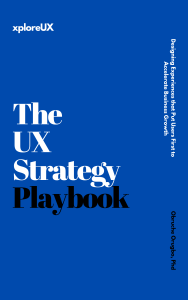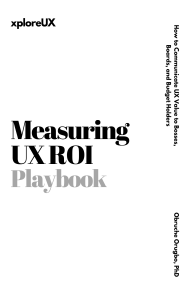
In today’s digital product environment, two major shifts are rewriting how experience professionals work. First, the rise of AI-powered UX research means more teams use machine learning tools to streamline everything from transcription to pattern detection. Second, designing AI interfaces—chatbots, voice-assistants, and generative-AI systems—is no longer niche but central. In this post, we explore how these dual pillars—AI for research and AI as the interface—are shaping UX in 2025, what that means for UX consultants and product designers, and how to apply smart practice.
More UX and product teams are adopting tools that automate and augment research workflows. Around 58% of UX/product teams now use AI tools for tasks like data analysis and transcription—a significant rise from the previous year.
By applying AI-powered UX research, teams reduce manual effort, uncover patterns faster, and free human researchers to focus on insight rather than repetition. Yet, the key word here is augmentation, not replacement. AI acts as a co-pilot, helping researchers identify insights faster while humans provide the empathy, reasoning, and contextual understanding that machines still lack.
Workflow Changes
Here’s how typical research workflows are changing thanks to AI-powered UX research:
- Automated transcription of interviews and usability sessions.
- AI-assisted tagging, sentiment analysis, and theme detection in qualitative data.
- Pattern recognition in large datasets that might otherwise be missed by humans.
- Faster participant recruitment and automated data summarisation for reports.
The Benefits and Caveats
Benefits of AI-powered UX research include faster turnaround times, the ability to handle larger sample sizes, and improved efficiency—allowing UX researchers to spend more time on synthesis and storytelling.
However, there are important caveats:
- Over-reliance on automation may lead to missed context or human nuance.
- Data bias can creep in if AI models are trained on unrepresentative samples.
- AI cannot decide which insights truly matter for a product’s goals.
For UX consultants and product teams, the takeaway is clear: use AI-powered UX research as a lever to enhance quality, not a shortcut to replace human understanding.
Beyond research, another major strand of 2025’s UX practice is designing AI interfaces—products where AI isn’t in the background but at the forefront. Chatbots, voice-assistants, and generative-AI systems require a completely new mindset. You’re not just designing an interface; you’re designing a relationship between human and machine.
Key Design Challenges
As more products include AI-led features, new usability issues emerge:
- User trust and transparency: Users must understand what the AI is doing and why. Building this trust is now as critical as achieving good performance or aesthetic appeal.
- Explainability: Users want to know why an AI made a particular suggestion or decision. Design should make this reasoning visible.
- Unpredictability: AI systems can behave in unexpected ways. UX teams need to design for failure and recovery, not just success.
- Ethics and bias: Every AI system carries the risk of embedded bias. Ethical design must consider fairness, consent, and inclusivity from the start.
Shifting UX Practices
Designing for AI interfaces means adapting established UX methods:
- Prototype not just visual states, but AI behaviour states—how the system learns, adapts, or fails.
- Usability testing must include machine behaviour and response quality.
- Communication loops become central: “Did this help you?” or “Why did I get this suggestion?”
- Trust becomes a measurable UX metric alongside task success and satisfaction.
From a practical standpoint, this means clients need more than “a chatbot” or “a voice assistant.” They need clarity about how the AI interacts, explains, and maintains transparency with users.
These two trends—AI for research and AI as the interface—are merging fast. The insights gained from AI-powered UX research inform the design of AI interfaces, while data gathered from those interfaces feeds back into ongoing research.
The Virtuous Cycle
- Use AI-powered research to analyse feedback and identify user pain points.
- Design AI interfaces that directly address these insights.
- Gather real interaction data from those interfaces and feed it back into research.
- Continuously refine both the interface and the AI models behind it.
This creates a living feedback loop where research informs design, and design generates new research data. For modern UX professionals, this merging transforms the role into a hybrid of researcher, strategist, and AI product thinker.
To stay ahead, teams need structured practices that integrate both sides of AI and UX effectively.
For AI-Powered UX Research
- Treat AI tools as assistants, not replacements. Use them for automation but rely on human reasoning for context.
- Maintain diverse datasets to reduce algorithmic bias.
- Combine quantitative AI insights with qualitative human understanding.
- Define success metrics that include trust and transparency.
- Keep a clear audit trail to ensure accountability in AI-assisted findings.
For Designing AI Interfaces
- Be transparent about how the AI operates and where data comes from.
- Provide clear options for users to control or override AI decisions.
- Prototype and test AI behaviour in both typical and edge-case scenarios.
- Measure user trust and perceived fairness as part of usability testing.
- Design for recovery: when AI fails or misinterprets, users should feel safe and in control.
For Combined Workflows
- Use insights from AI-powered UX research to shape AI interaction flows.
- Feed user behaviour data from AI interfaces back into ongoing research.
- Communicate clearly with stakeholders about AI’s limitations and responsibilities.
- Keep privacy and ethics central to every phase of your workflow.
For UX consultants, product designers, and strategists, the growing importance of AI means your value shifts from design execution to AI-enabled strategy. You become a bridge between technology and human understanding.
Evolve Your Role
You’re now responsible not only for user experience but also for ensuring that AI behaviour aligns with user goals, ethics, and emotional comfort. This new generation of UX professionals—often called “UX 3.0 practitioners”—balances data intelligence with empathy and narrative.
Upskill Your Toolkit
To thrive, you’ll need to:
- Learn how AI tools collect, clean, and interpret user data.
- Understand how generative models and voice interfaces function.
- Develop literacy in AI ethics, bias mitigation, and data transparency.
- Use prompt-engineering to test generative UX concepts and prototypes.
Translate for Clients
When advising small businesses, healthcare professionals, or creators, communicate the benefits and risks of using AI in plain terms. Explain that while AI-powered UX research accelerates discovery, human validation ensures accuracy. Likewise, AI interfaces can offer smarter interactions but require ethical safeguards and human control.
Manage Risk
Poorly implemented AI can erode user trust or introduce bias. UX professionals act as ethical gatekeepers—ensuring that AI works for people, not just for efficiency. Always test with real users and keep transparency at the heart of your process.
Case A: Healthcare App with AI Assistant
A startup building a patient-support app can integrate a voice-assistant to track symptoms and answer questions. UX researchers use AI-powered UX research to analyse patient feedback and identify common frustrations. The design team then creates an AI interface that explains why certain questions are asked and when the conversation hands over to a clinician. Trust and transparency become measurable success metrics.
Case B: E-Commerce Chatbot for Small Businesses
A boutique e-commerce shop uses AI-powered UX research to analyse customer service chats. They identify friction points like “size confusion” or “gift wrapping.” The resulting AI interface—a product recommendation chatbot—asks clarifying questions and explains its logic (“I recommended this because you viewed similar items”). The business measures trust and conversion rates to evaluate success.
Case C: AI-Driven Analytics Dashboard for Startups
A founder building a data dashboard wants to make insights accessible through natural language. Researchers use AI-powered UX research to find where users struggle with data comprehension. The resulting AI interface lets users ask questions in plain English and shows reasoning for each answer (“I calculated this using last month’s figures”). Transparency fosters confidence in the product.
Looking forward, AI will become embedded in nearly every stage of UX. Systems will be more natural, adaptive, and human-aware. To stay relevant, professionals need to lead, not follow.
- Continuous discovery will replace periodic research. AI will allow for real-time insight tracking.
- Ethical AI design will become a competitive advantage. Products that are transparent and fair will win long-term trust.
- Cross-disciplinary collaboration will grow—UX professionals will work closely with AI engineers, data scientists, and ethicists.
- Voice and generative AI interfaces will expand into new sectors such as education, healthcare, and retail.
- Trust metrics will join usability metrics as standard indicators of design quality.
To stay ahead, audit your workflows, identify where AI can save time, and test small pilots. Educate clients about how AI helps without over-promising. Most importantly, keep empathy at the centre—because even in an AI-driven world, human connection is still what defines a great user experience.
The intersection of AI-powered UX research and AI interfaces marks a major evolution for the UX profession. Research is becoming faster and more scalable; interfaces are becoming smarter and more conversational. But success depends on maintaining balance, using AI to empower people, not replace them.
For UX consultants, startup founders, and digital creators, this is your opportunity to redefine value. Use AI to accelerate understanding, not to remove curiosity. Design AI interfaces that feel intuitive, ethical, and transparent. The future of UX isn’t man versus machine, it’s man and machine, working together to make products that truly serve people.
Would you like me to create a downloadable AI-UX Research Toolkit (with recommended tools, workflows, and prompts) to go with this article?
- Maze (2025). AI in UX Research: How Product Teams Use Artificial Intelligence to Streamline Workflows.Available at: https://maze.co (Accessed: 6 October 2025).
- UX Matters (2025). Designing for AI: Building Trust and Transparency in AI Interfaces. Available at: https://uxmatters.com (Accessed: 6 October 2025).
- Full Clarity (2025). AI in User Research: How Machine Learning Is Changing the Way UX Teams Work. Available at: https://fullclarity.co.uk (Accessed: 6 October 2025).
- Adam Fard (2025). The Role of AI in UX Research and Product Design. Available at: https://adamfard.com(Accessed: 6 October 2025).
- NN/g (2025). AI and UX: How Artificial Intelligence Is Redefining User Research. Available at: https://nngroup.com (Accessed: 6 October 2025).
- Loop11 (2025). 8 Key UX Research Trends Shaping 2025 (and What to Watch in 2026). Available at: https://loop11.com (Accessed: 6 October 2025).
- Lyssna (2025). UX Research Trends for 2025: Continuous Discovery and AI Integration. Available at: https://lyssna.com (Accessed: 6 October 2025).
- UX Army (2025). Will AI Replace UX Researchers? Understanding the Human Element in Automation. Available at: https://uxarmy.com (Accessed: 6 October 2025).
- Nielsen Norman Group (2025). AI Work Study Guide: Understanding AI’s Role in UX Research. Available at: https://nngroup.com (Accessed: 6 October 2025).
- ArXiv (2025). UX 3.0: Designing Human-Centered Experiences in the Age of Artificial Intelligence. Available at: https://arxiv.org (Accessed: 6 October 2025).








